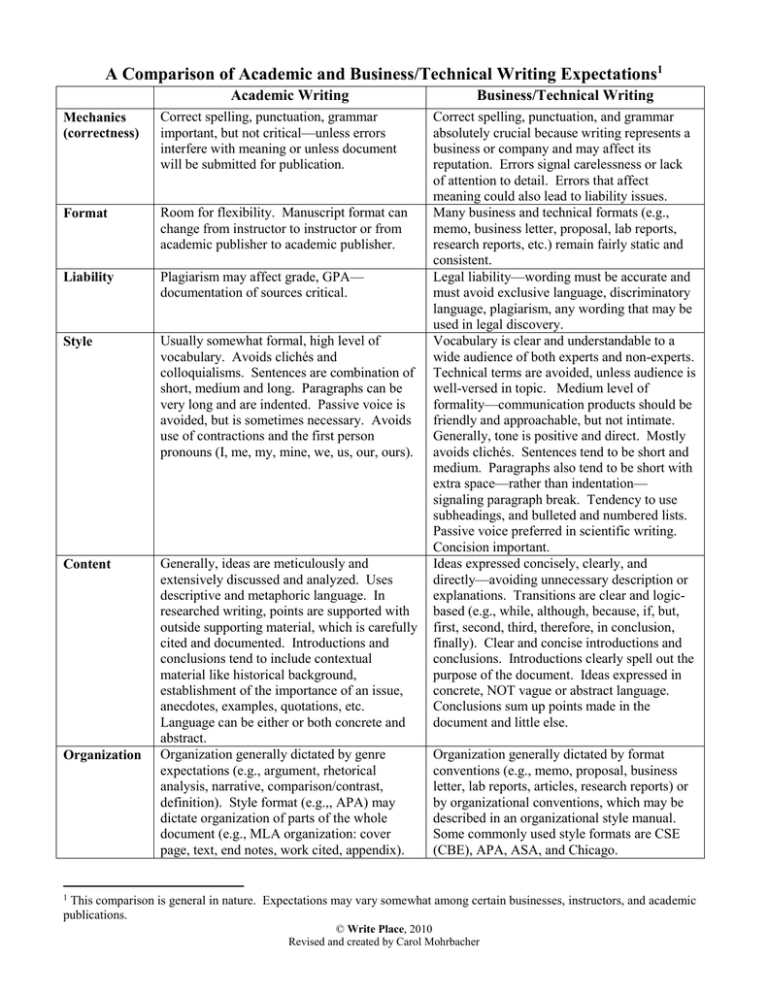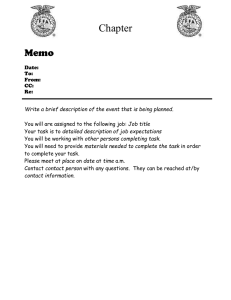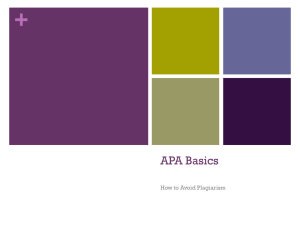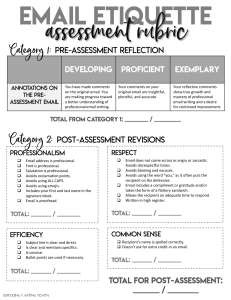A Comparison of Academic and Business/Technical Writing Expectations Academic Writing Business/Technical Writing
advertisement

A Comparison of Academic and Business/Technical Writing Expectations1 Academic Writing Mechanics (correctness) Correct spelling, punctuation, grammar important, but not critical—unless errors interfere with meaning or unless document will be submitted for publication. Format Room for flexibility. Manuscript format can change from instructor to instructor or from academic publisher to academic publisher. Liability Plagiarism may affect grade, GPA— documentation of sources critical. Style Usually somewhat formal, high level of vocabulary. Avoids clichés and colloquialisms. Sentences are combination of short, medium and long. Paragraphs can be very long and are indented. Passive voice is avoided, but is sometimes necessary. Avoids use of contractions and the first person pronouns (I, me, my, mine, we, us, our, ours). Content Generally, ideas are meticulously and extensively discussed and analyzed. Uses descriptive and metaphoric language. In researched writing, points are supported with outside supporting material, which is carefully cited and documented. Introductions and conclusions tend to include contextual material like historical background, establishment of the importance of an issue, anecdotes, examples, quotations, etc. Language can be either or both concrete and abstract. Organization generally dictated by genre expectations (e.g., argument, rhetorical analysis, narrative, comparison/contrast, definition). Style format (e.g.,, APA) may dictate organization of parts of the whole document (e.g., MLA organization: cover page, text, end notes, work cited, appendix). Organization Business/Technical Writing Correct spelling, punctuation, and grammar absolutely crucial because writing represents a business or company and may affect its reputation. Errors signal carelessness or lack of attention to detail. Errors that affect meaning could also lead to liability issues. Many business and technical formats (e.g., memo, business letter, proposal, lab reports, research reports, etc.) remain fairly static and consistent. Legal liability—wording must be accurate and must avoid exclusive language, discriminatory language, plagiarism, any wording that may be used in legal discovery. Vocabulary is clear and understandable to a wide audience of both experts and non-experts. Technical terms are avoided, unless audience is well-versed in topic. Medium level of formality—communication products should be friendly and approachable, but not intimate. Generally, tone is positive and direct. Mostly avoids clichés. Sentences tend to be short and medium. Paragraphs also tend to be short with extra space—rather than indentation— signaling paragraph break. Tendency to use subheadings, and bulleted and numbered lists. Passive voice preferred in scientific writing. Concision important. Ideas expressed concisely, clearly, and directly—avoiding unnecessary description or explanations. Transitions are clear and logicbased (e.g., while, although, because, if, but, first, second, third, therefore, in conclusion, finally). Clear and concise introductions and conclusions. Introductions clearly spell out the purpose of the document. Ideas expressed in concrete, NOT vague or abstract language. Conclusions sum up points made in the document and little else. Organization generally dictated by format conventions (e.g., memo, proposal, business letter, lab reports, articles, research reports) or by organizational conventions, which may be described in an organizational style manual. Some commonly used style formats are CSE (CBE), APA, ASA, and Chicago. 1 This comparison is general in nature. Expectations may vary somewhat among certain businesses, instructors, and academic publications. © Write Place, 2010 Revised and created by Carol Mohrbacher




